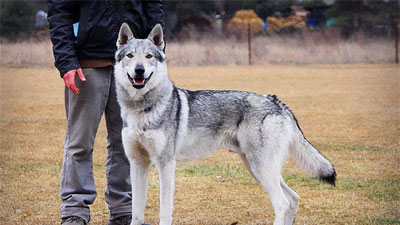- Size
- Smallest
- Small
- Small to Medium
- Medium
- Large
- Giant
- Characteristics
- Smartest
- Hypoallergenic
- Fluffy
- Best Guard
- Best Family
- Best for Kids
- Low Shedding
- Healthiest
- Police Dogs
- Most Calm
- Quietest
- Color
- White
- Black
- Grey
- Brown
- Blue
- Red
- Coat
- Hairless
- Short
- Long
- Origin
- Japan
- China
- Australia
- Germany
- Italy
- United States
- France
- Group
- Hound
- Terrier
- Herding
- Toy
- Working
- Sporting
The 'Wait' Command: Teaching Your Dog Patience and Discipline

Photo by Courtney Cook on Unsplash
The "wait" command holds immense value in dog training, directing your furry friend to maintain focus and stay put until given the go-ahead. This cue proves especially effective in averting scenarios where your dog might impulsively bolt out of doors or crates.
Fortunately, training your dog to wait necessitates no specialized gear. Rather than relying on food rewards, the command communicates to your dog that adhering to it allows certain privileges. While introducing a new command can be challenging, mastering the "wait" is relatively straightforward and beneficial in numerous scenarios.
Introducing the Command
Training your dog to wait seamlessly integrates into daily routines, making separate training sessions unnecessary. Here's a step-by-step approach to introducing and reinforcing the "wait" command:
Initial Training Steps:
Implement the "wait" command each time your dog approaches a door or exits a crate.
Gradually open the door, observing your dog's response. Swiftly close it if they attempt to rush forward, progressively widening the door opening as they respond calmly.
Rewarding Positive Responses:
In the early stages, acknowledge any hesitation displayed by your dog when they heed the "wait" command.
Offer praise for waiting and employ a release command such as "free" or "go ahead" as a cue to proceed.
Progression and Expanding the Command
Advancing Duration and Diverse Scenarios:
Extend the duration your dog waits before the release, gradually increasing the waiting time.
Apply the "wait" command in varied situations, like awaiting meals or prior to starting a walk.
Implementing 'Wait' in Different Contexts
Promoting Self-Control:
Train your dog to wait in diverse scenarios, such as waiting for food. Use a treat-filled bowl, gradually lowering it to your knee while reinforcing the "wait" command.
Applying the Command Thoughtfully:
Employ the "wait" command before walks or before exiting a car, emphasizing safety and discipline.
Troubleshooting and Elevating Training
Consistency and Reinforcement:
Maintain regular use of the "wait" command, ensuring it remains ingrained in your dog's behavior.
If compliance wanes, revisit initial training steps to reinforce positive behavior, ensuring a quick refresher course.
Advanced Training Techniques:
Elevate the command by introducing playful tasks. For instance, train your dog not to touch a toy until directed, promoting self-control and fun tricks.
By practicing patience, consistency, and utilizing positive reinforcement, your dog will grasp the "wait" command effectively. This command not only enhances discipline but also fosters a deeper understanding between you and your furry companion.
You May Also Like
 Dog Training TipsHow To Train Your Dog To Eye Contact
Dog Training TipsHow To Train Your Dog To Eye Contact Help & AdviceWhy Won't My Dog Learn To "Stand" Command?
Help & AdviceWhy Won't My Dog Learn To "Stand" Command? Dog Training TipsThe 'Stand' Command: A Crucial Yet Overlooked Training Cue
Dog Training TipsThe 'Stand' Command: A Crucial Yet Overlooked Training Cue Dog Training TipsThe Place Command: Teach Your Dog to Go to Their Place
Dog Training TipsThe Place Command: Teach Your Dog to Go to Their Place Dog Training TipsDog Tricks: Teach Your Dog to High Five
Dog Training TipsDog Tricks: Teach Your Dog to High Five Dog Training TipsTrain Your Dog to Play Dead: A Step-by-Step Guide
Dog Training TipsTrain Your Dog to Play Dead: A Step-by-Step Guide